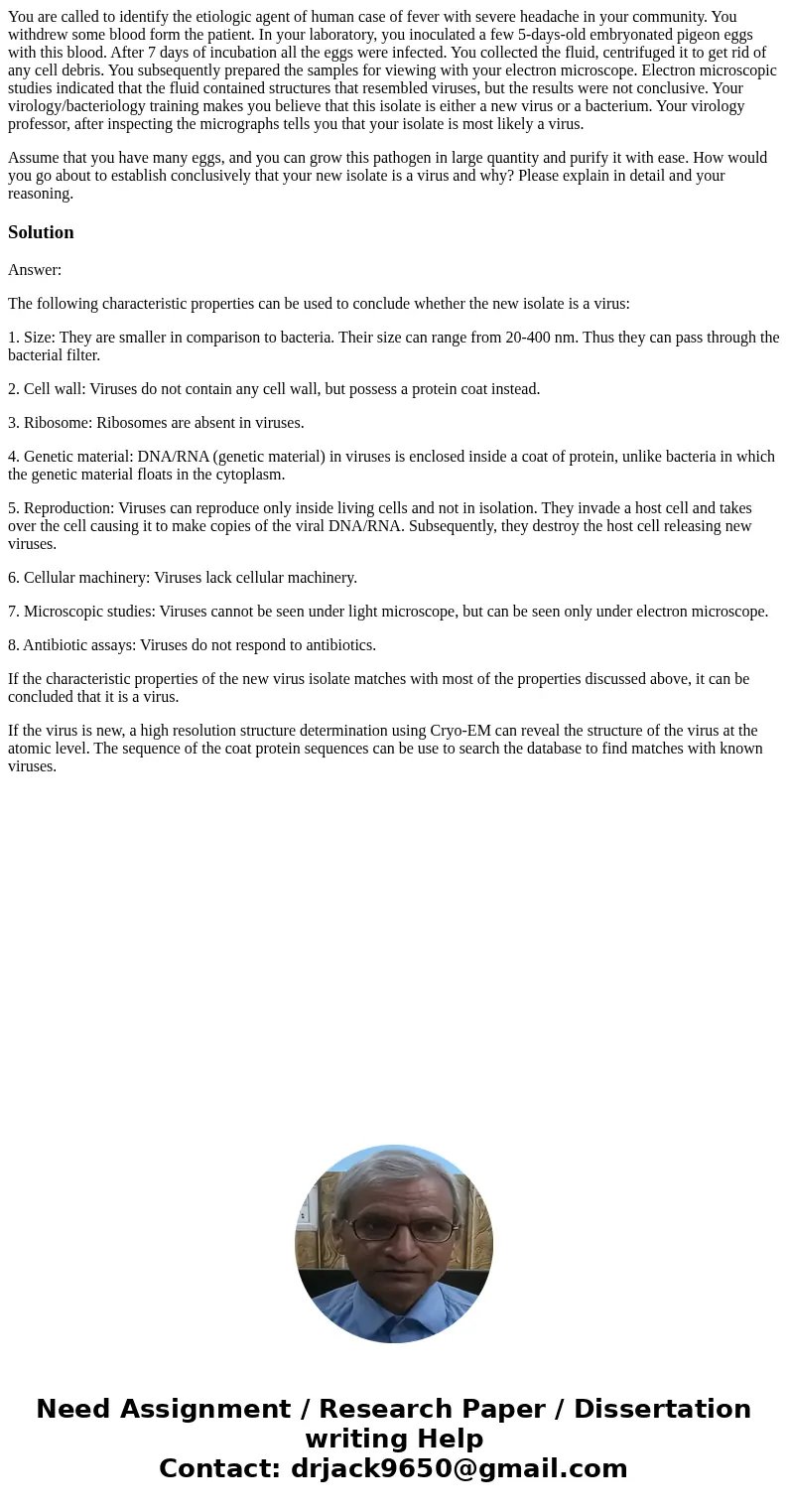You are called to identify the etiologic agent of human case
You are called to identify the etiologic agent of human case of fever with severe headache in your community. You withdrew some blood form the patient. In your laboratory, you inoculated a few 5-days-old embryonated pigeon eggs with this blood. After 7 days of incubation all the eggs were infected. You collected the fluid, centrifuged it to get rid of any cell debris. You subsequently prepared the samples for viewing with your electron microscope. Electron microscopic studies indicated that the fluid contained structures that resembled viruses, but the results were not conclusive. Your virology/bacteriology training makes you believe that this isolate is either a new virus or a bacterium. Your virology professor, after inspecting the micrographs tells you that your isolate is most likely a virus.
Assume that you have many eggs, and you can grow this pathogen in large quantity and purify it with ease. How would you go about to establish conclusively that your new isolate is a virus and why? Please explain in detail and your reasoning.
Solution
Answer:
The following characteristic properties can be used to conclude whether the new isolate is a virus:
1. Size: They are smaller in comparison to bacteria. Their size can range from 20-400 nm. Thus they can pass through the bacterial filter.
2. Cell wall: Viruses do not contain any cell wall, but possess a protein coat instead.
3. Ribosome: Ribosomes are absent in viruses.
4. Genetic material: DNA/RNA (genetic material) in viruses is enclosed inside a coat of protein, unlike bacteria in which the genetic material floats in the cytoplasm.
5. Reproduction: Viruses can reproduce only inside living cells and not in isolation. They invade a host cell and takes over the cell causing it to make copies of the viral DNA/RNA. Subsequently, they destroy the host cell releasing new viruses.
6. Cellular machinery: Viruses lack cellular machinery.
7. Microscopic studies: Viruses cannot be seen under light microscope, but can be seen only under electron microscope.
8. Antibiotic assays: Viruses do not respond to antibiotics.
If the characteristic properties of the new virus isolate matches with most of the properties discussed above, it can be concluded that it is a virus.
If the virus is new, a high resolution structure determination using Cryo-EM can reveal the structure of the virus at the atomic level. The sequence of the coat protein sequences can be use to search the database to find matches with known viruses.

 Homework Sourse
Homework Sourse